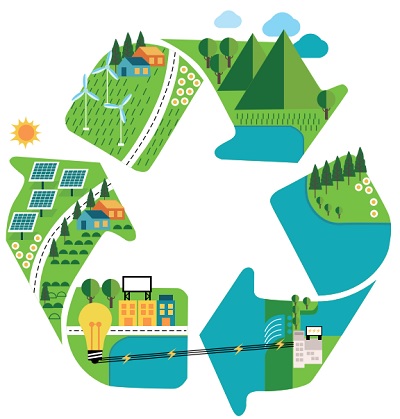by | Dr. Shadiya Baqutayan | PM Dr. Jennifer Chan Kim Lian
Islands share many common attractions including natural resources, coral reefs, fishes, mangroves, coastal vegetation, and beautiful white sandy beaches with clear blue waters. Lives on the islands are normally peaceful and harmonious. However, some islands are well-developed while others remain relatively undeveloped. The common pertinent questions asked with regard to islands are: How do we maintain and protect islands’ ocean resources? What will happen to the resources in undeveloped islands? What are the threats that affect undeveloped islands? And, more importantly, how can the government transform these undeveloped islands and their populations?
Challenges such as climate change (Richardson et al. 2009), high levels of environmental degradation (UNEP 2009), peak oil consumption (Kerr 2007), decline of water quality (Spait, 2001), and limitation in energy sources (Ooi & Chew, 2012) have a strong impact on these islands and make them unsustainable. Therefore, the ability to change to new arrangements when the current state is no longer viable (Gass 2010; Brookfield 2012) are needed to protect such islands and their communities. Transformation in communities is seen in the way society and culture change in response to such factors as economic growth and development, industrialization, modernization, andwar or political upheavals (Polanyi, 1944). The transformation of an island is often the result of its dependence on tourism that brings about cultural, social, economic and political changes, and it affects its ethnic and historical identity and geography (Currin, 1999).
An example on the impact of transformation of an island and its communities is Pulau Banggi, Sabah. The coastal communities of Pulau Banggi are economically underdeveloped, and they are overly dependent on the island’s reef fisheries for livelihood. Population growth, international market demand, and the arrival of illegal fishing vessels have combined to increase pressure on reef fishery resources, leading to perceived declines in catch rates over the past 20 years.
Energy source was another concern at Pulau Banggi. Limitations in energy sources and overdependence on fossil fuels have impeded development. The introduction of Ocean Thermal Energy Conversion (OTEC) activities is possibly the best solution for Pulau Banggi and its communities. Through the OTEC Solution, Pulau Banggi may experience a great transformation that could have major implications, particularly for the economic, social and environmental development of the island.
According to Chan (2014), OTEC implementation may herald economic and social development of the coastal and rural areas of Sabah. With the supply of reliable and cheaper source of electricity, the quality of life and wealth of the local communities will be enhanced. It also enhances fishermen’s livelihood along the island coastal area. It is postulated that OTEC may bring more business opportunities in the coastal and rural areas of Sabah, especially in the diversification of tourism products and services undertaken through community tourism. The transfer of skills and knowledge to the local community is envisaged in multiple areas, leading to better quality products and services. The implementation of OTEC offers more avenues for research and innovation in various product developments in various fields, such as marine and coastal aquaculture, agriculture, tourism products, tourism leisure and recreation activities, water quality and skin care products. More importantly, the implementation of OTEC brings an alternative reliable and cheaper source of electricity to the coastal areas of Sabah.
OTEC will likely support the region in terms of job creation; lower oil dependency; improvements in the efficiency of technologies; promotion of self-sustaining industries and greater employment opportunities; boosting of leisure, recreation and tourism activities; improvements in the transportation of goods, services and people; provision of a viable source of renewable energy; sustenance of biodiversity and waste disposal systems; and a natural sea defence. It would also promote research and education resources and help preserve the geographic heritage.
It is important to note that the Federal Government of Malaysia and the Sabah state government are embarking on aggressive policies to promote large-scale use of renewable or green energy, and there is strong consensus that Malaysia is looking at OTEC as a primary source of oceanbased renewable energy (Yaakob 2013).
References
1. Brookfield, S. D. (2012). Critical theory and transformative learning. Pages 131-146 in E. W. Taylor and P. Cranton, editors. The handbook of transformative learning: theory, research and practice. Jossey-Bass, San Francisco, California, USA.
2. Currin, F. H., (1999). Transformation Of Paradise: Geographical Perspectives On Tourism Development On A Small Caribbean Island (Utila, Honduras). A Thesis Submitted to the Graduate Faculty of the Louisiana State University and Agricultural and Mechanical College in partial fulfillment of the requirementsfor the degree of Master of Arts In The Department of Geography and Anthropology. Retrieved April 22, 2015, from: http://etd.lsu.edu/docs/available/etd-1114102-141915/unrestricted/Currin_thesis.pdf
3. Gass, R. (2010). What is transformational change? Pages 12-14 in R. Gass, editor. Framing deep change: essays on transformative social change. Center for Transformative Change, Berkeley, California, USA.
4. Kerr, R. A. (2007). The looming oil crisis could arrive uncomfortably soon. Science 316(5825):351. http://dx.doi. org/10.1126/science.316.5823.351
5. Lian, J. C. K., (2014). Social Transformation Of Undeveloped Coastal And Island Communities With OTEC Solution. Unpublished presentation to UTM Ocean Thermal Energy Centre. Ground floor, Block Q, UTM KL.
6. NEW STRAITS TIMES, (2012). [Online], Available at: <http://www.nst.com.my/nation/general/sabah-to- boost-productionof-green-energy-1.146813>[Accessed 19 October 2012].
7. Ooi, B. J., & Chew, B. C., (2012). Managing The Transition Of Fossil Fuels To Renewable Energy: Application Of Ocean Thermal Energy Conversion At Sabah. Power and Energy Conversion Symposium (PECS 2012) Melaka, Malaysia, 22 November 2012. Retrieved April 22, 2015, from: https://www.academia.edu/2182614/Managing_the_Transition_of_Fossil_Fuels_to_Renewable_Energy_Application_of_Ocean_Thermal_Energy_Conversion_OTEC_at_Sabah_Malaysia
8. Polanyi, K., (1944). The Great Transformation. Boston: Beacon Press. 1957: The Economy as an Instituted Process. In: Karl Polanyi/Conrad M. Arensberg/Harry W. Pearson (eds.), Trade and Market in the Early Empires. New York: Free Press, 243–270.
9. Richardson, K., et al., (2009). Climate change: global risk, challenges & decisions. Copenhagen, 10-12 March. Synthesis report. University of Copenhagen, Copenhagen, Demark. [online] URL: http://climatecongress.ku. dk/pdf/synthesisreport
10. Spait, M., (2001), Marine Park Management: Issues And Challenges. 6th SITE Research Seminar, 13-14 September 2001. Retrieved April 22, 2015, from:http://ww2.sabah.gov.my/jpas/news/site/siteppr16.pdf
11. United Nations Environment Programme (UNEP). (2009). UNEP yearbook 2009: new science and development in our changing environment. UNEP, Nairobi, Kenya. [online] URL: http://www. unep.org/yearbook/2009/
12. Yaakob, O., (2013). Marine Renewable Energy Initiatives in Malaysia. Southeast Asian Collaboration for Ocean Renewable Energy. Singapore









